For many villagers the village pub will always be thought of as “The White Lion”, with the current name of the “Old Smithy” being adopted in recent times. In fact the White Lion name appears to originate from around 1840. It was referenced as the White Lion in a court case in 1841, yet in both the 1828 and 1835 Pigots business directories there were two Church Lawford pubs listed – The Red Lion and The Yeoman. The Yeoman was run by William French, with Elizabeth Barnwell running the Red Lion.
Further investigation has led to a check on the Victuallers Database at the Warwick Records Office, and this confirms that from at least the start of the 19th Century the two Inns in Church Lawford were the Red Lion (run in 1801 by Richard Benn), and the Warwickshire Yeoman (run in 1801 by Edward French). The Red Lion passes to Hannah Benn around 1815, and to the Barnwell family in 1821 (initially John Barnwell, then Elizabeth Barnwell, nee Crofts in 1826). The Warwickshire Yeoman becomes known as just the Yeoman around 1819, passing from Edward to Martha French in 1813, William French in 1823.
By the time of the 1840 Pigots directory Robert Hitchcock was landlord of the White Lion – the only pub listed in the village. Whether the Red Lion and Yeoman merged in some way isn’t clear, but neither of them are referenced beyond 1839, other than a reference to the Red Lion in the Tithe records of 1849. The Yeoman was referred to multiple times with respect to an auction of timber in 1838/9, so the reference has been corroborated. Similarly the Red Lion is referenced in an auction of 1830 (which also references the Barnwell family). There is some evidence that William French fell on hard times, so he may have been forced to leave his business at during the 1830s.
In the Tithe Records of 1849, the Red Lion is located on or about the site of where the White Lion was to stand for so many years – with Henry Phillips listed as the tenant. The 1840 Pigots directory lists only the White Lion with the Hitchcock family in charge.
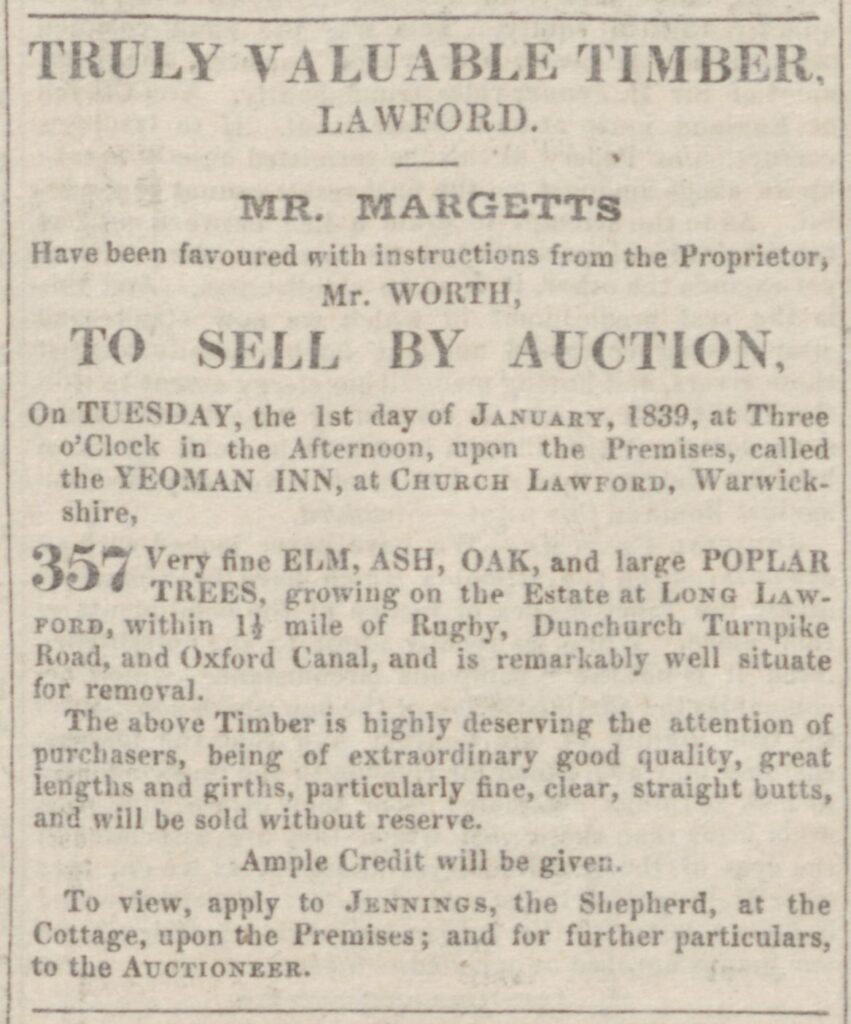
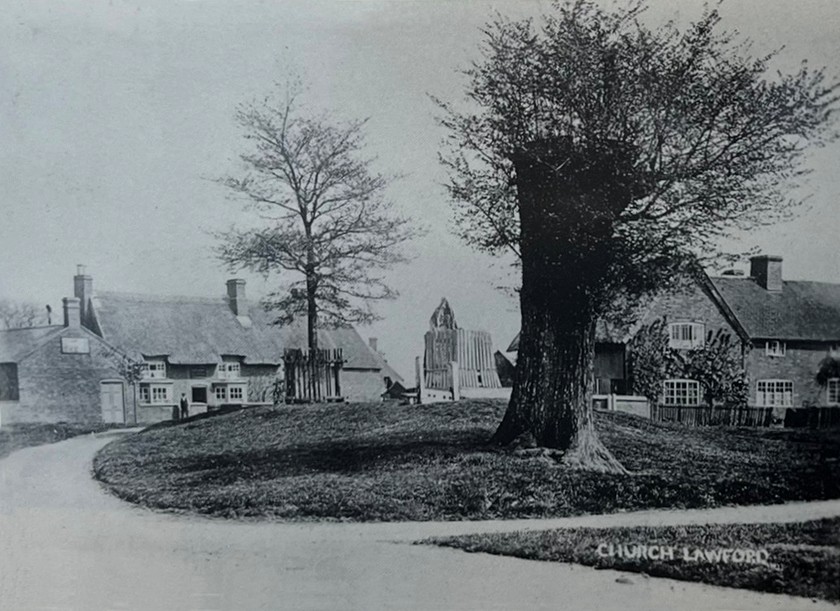
The White Lion has been at the centre of many village stories, going right back to the middle of the 19th century when the first local newspapers appeared and started recording these events. As well as being the Public House at the centre of the village it also hosted inquests in the local area, along with property auctions.
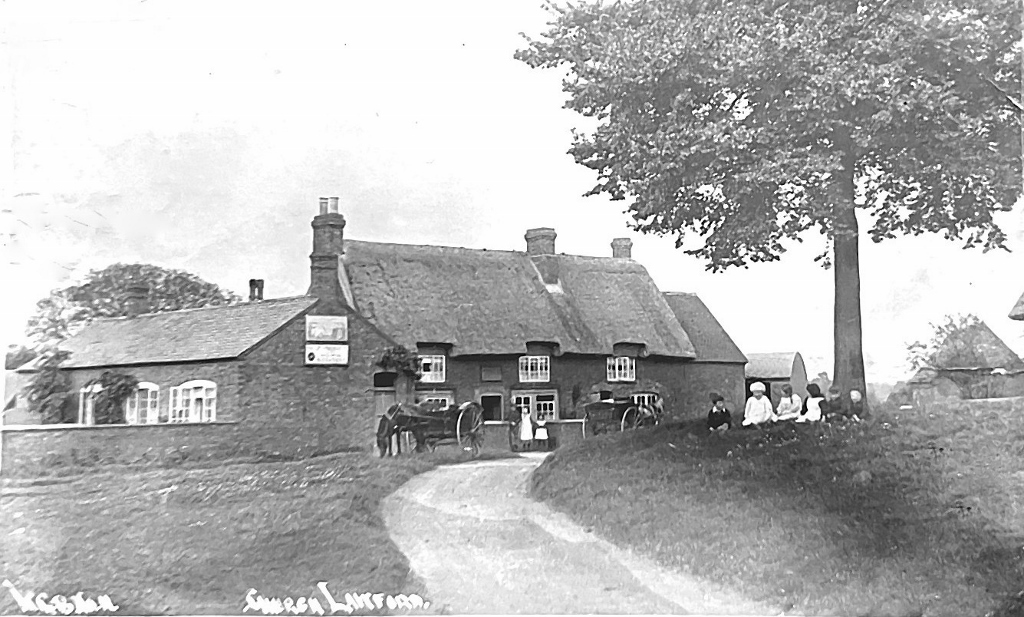
As mentioned above, in 1841 the Landlord was Robert Hitchcock, but in 1843 the pub moved from the Hitchcock family to the Billingham family when Mary Hitchcock married Josiah Billingham after Robert died. Josiah and Mary Billingham ran the pub for two decades, and then as Mary outlasted her second husband, she ran the pub until the 1870s when control passed firstly to William Hiorns, then in April 1875 to Joseph William Oliver (formerly landlord of the Shoulder of Mutton, Grandborough) then on to his widow Isabella. Isabella Oliver (1826-1900) was a popular landlady, catering for village events such as the Cricket Club Annual Dinner and the Rent Review Meetings, running the White Lion until towards the end of the century. The licence then passed to Isabella’s brother Thomas Howard, and on to his nephew Robert in 1900, before moving again to Henry Sanders later the same year. The period of change continued the following year, with Thomas Sharpe taking control. Thomas Sharpe held the licence until 1913.
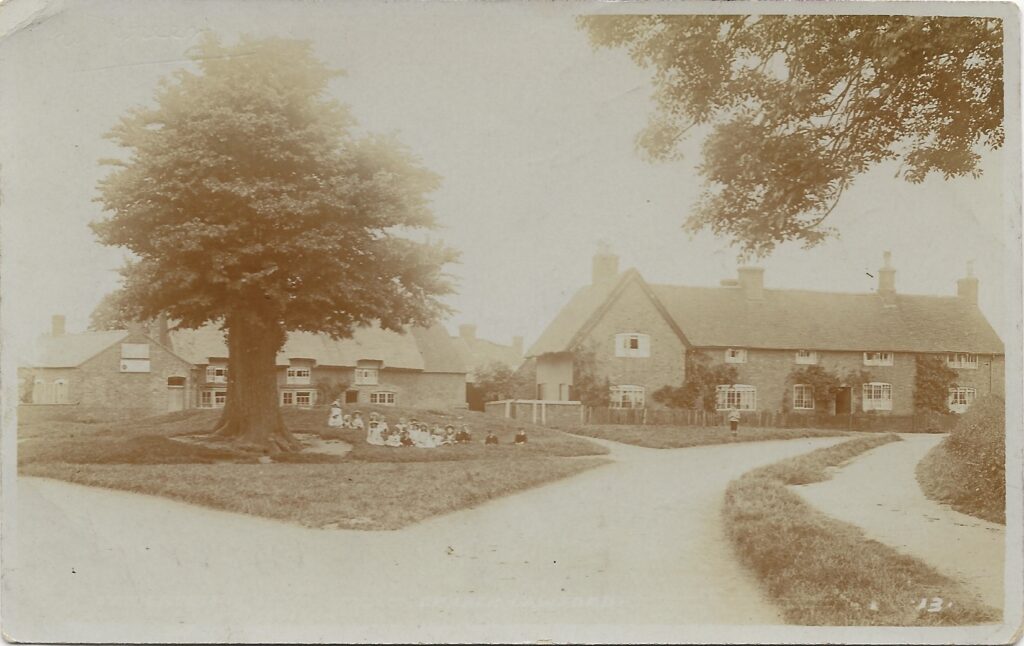
From 1914 the “People’s Refreshment House Association” took up the tenancy of the White Lion. That association was targeting inns that were still under Manorial control, rather than a big brewery. Their philosophy was to broaden the scope of the offering to include more meals and non-alcoholic drinks, with a tea-room and garden. They avoided advertising any alcoholic beverages, and thus may have satisfied some of the concerns of the Temperance movement. They ensured there was a separate entrance for those who wanted this additional offering. When the Estate Sale took place in 1918 they took ownership of the White Lion, and held the licence for the first half of the twentieth century. The clip opposite is from the Coventry Evening Telegraph of 13th June 1914, with a columnist giving his views on the PRHA.
Following the Village Sale in 1918, the White Lion Landlord, Thomas Strong, also took control of Mount Pleasant farm for a number of years. He gave up farming in 1928, having moved on from the White Lion previously.
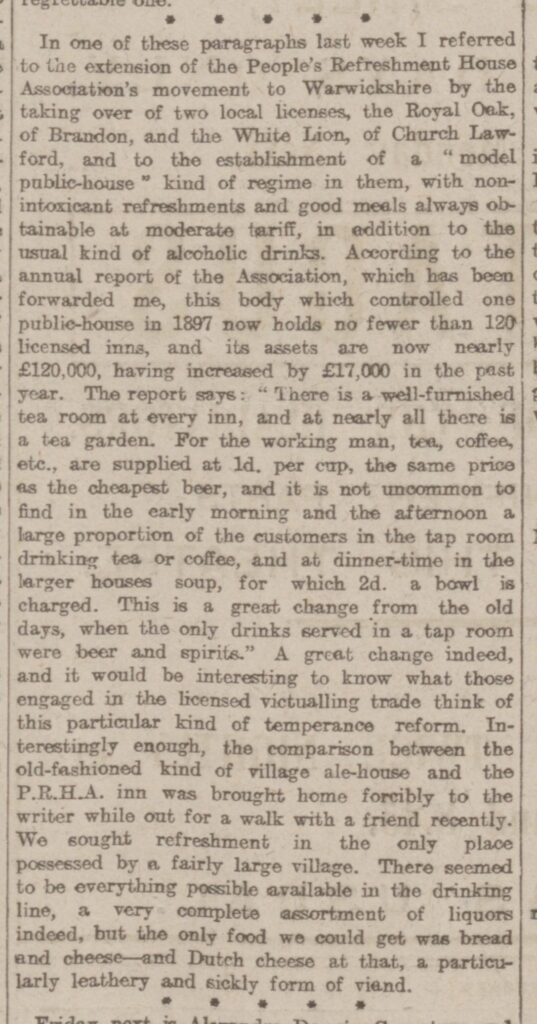
.
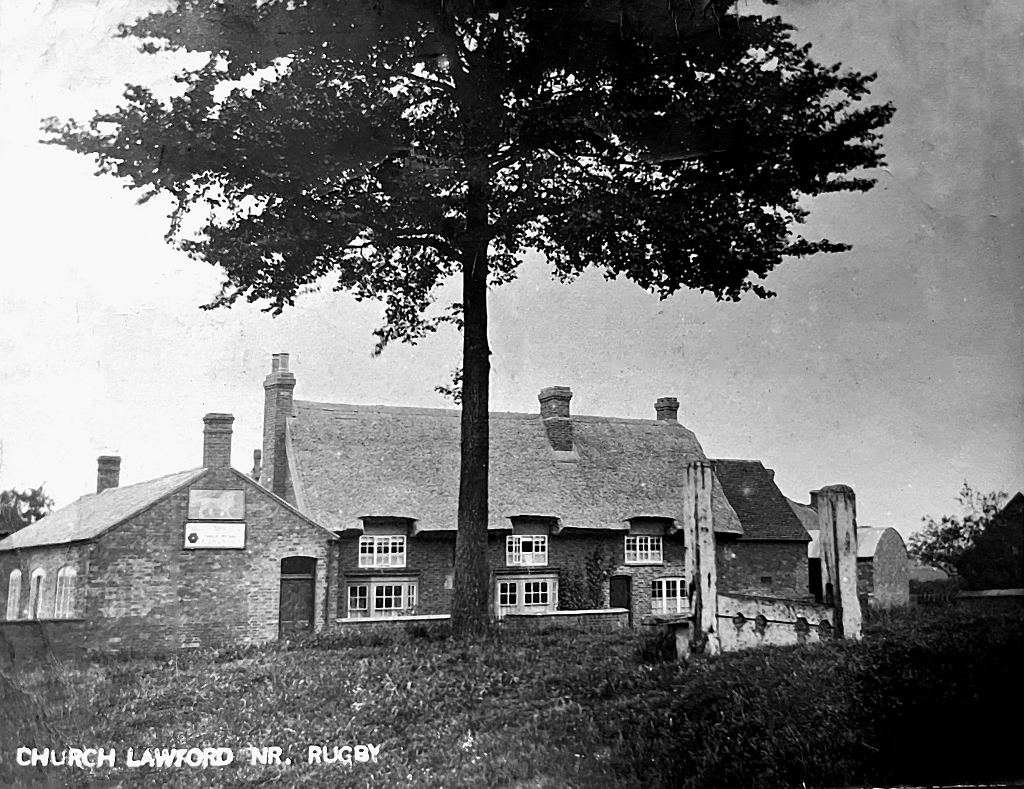
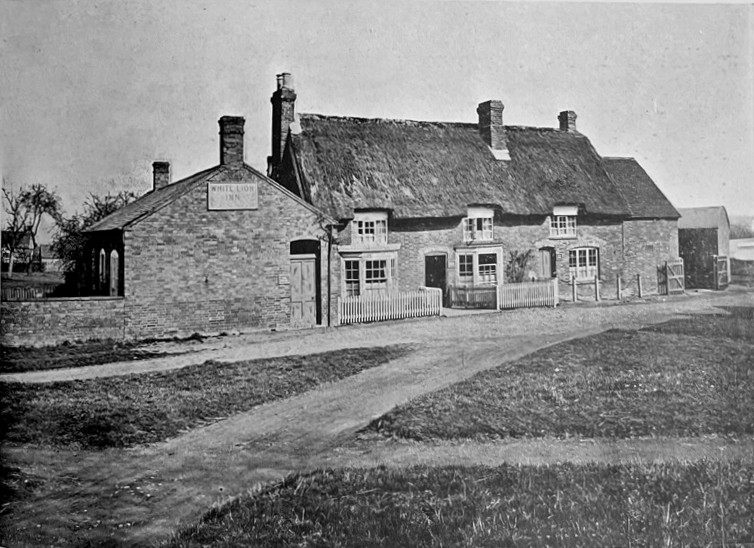
One of the most popular Landlords during the inter-war period and beyond was Andy Coot, landlord from 1935 to 1955, who arranged village events such as the potato show – see here. By the last quarter of the century the pub had been taken over by the Mitchells and Butlers brewery.

The Rugby Advertiser Reports on Andy Coot’s retirement in October 1955.
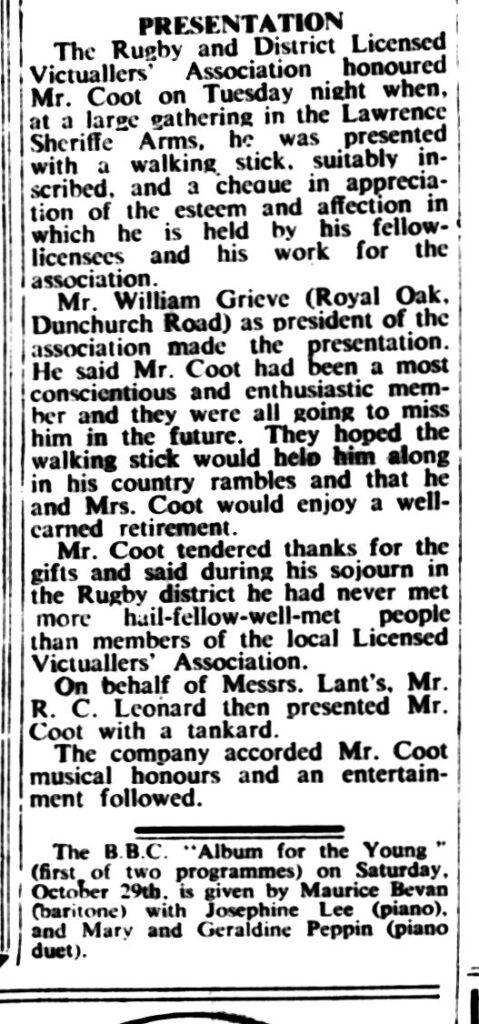
The Coventry Evening Telegraph reported on the White Lion entering a competition in 1987 to find the champion “Pub Lunch” in the Midlands, and ran a further story on the integration into the village in 1989. The success in that competition was featured in the advertisements for the White Lion in the Rugby Advertiser in 1989, as shown.
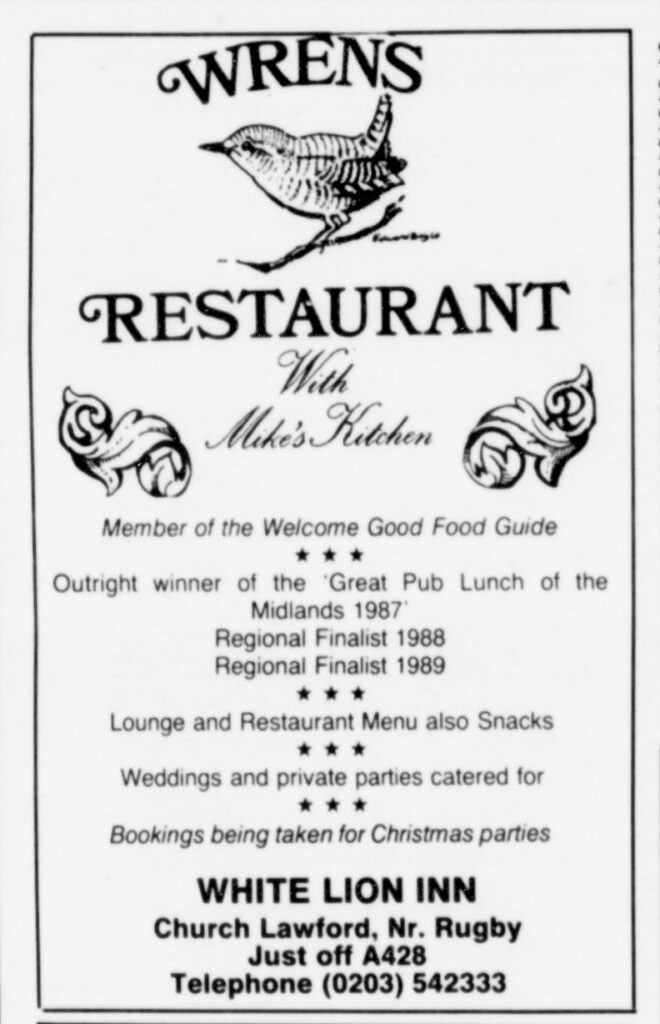
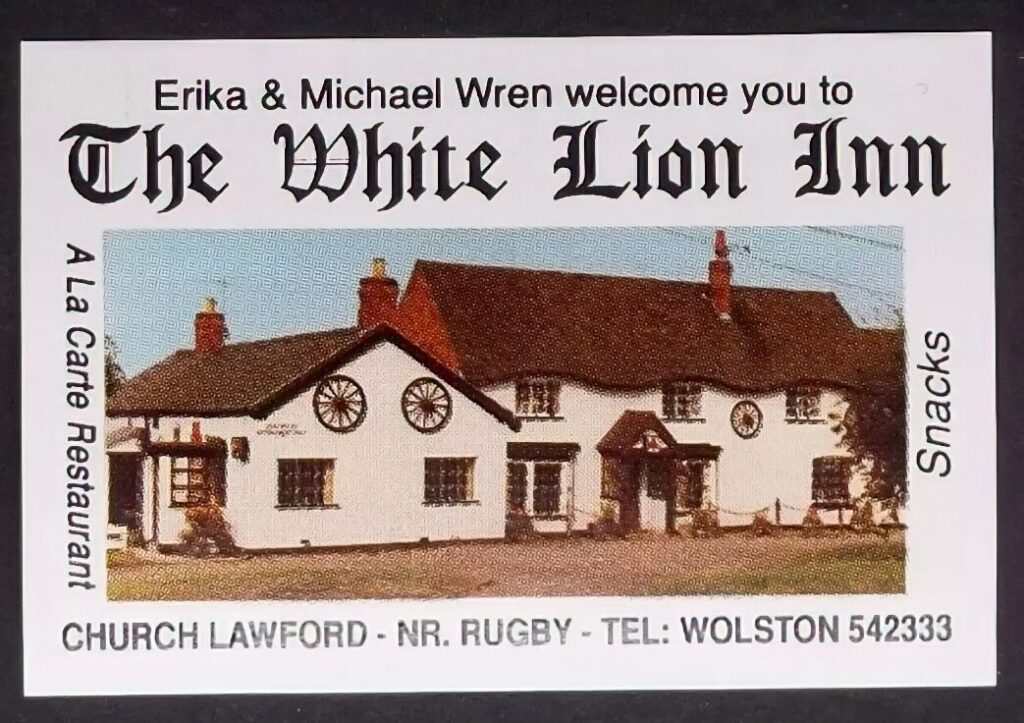
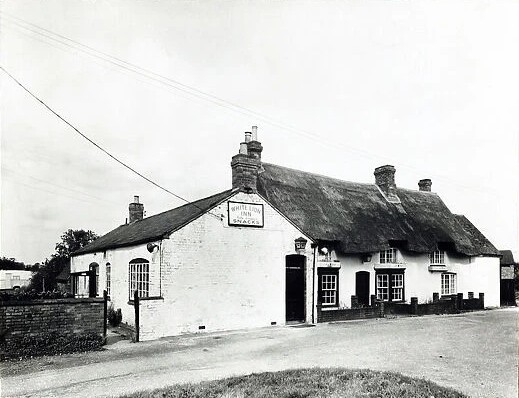
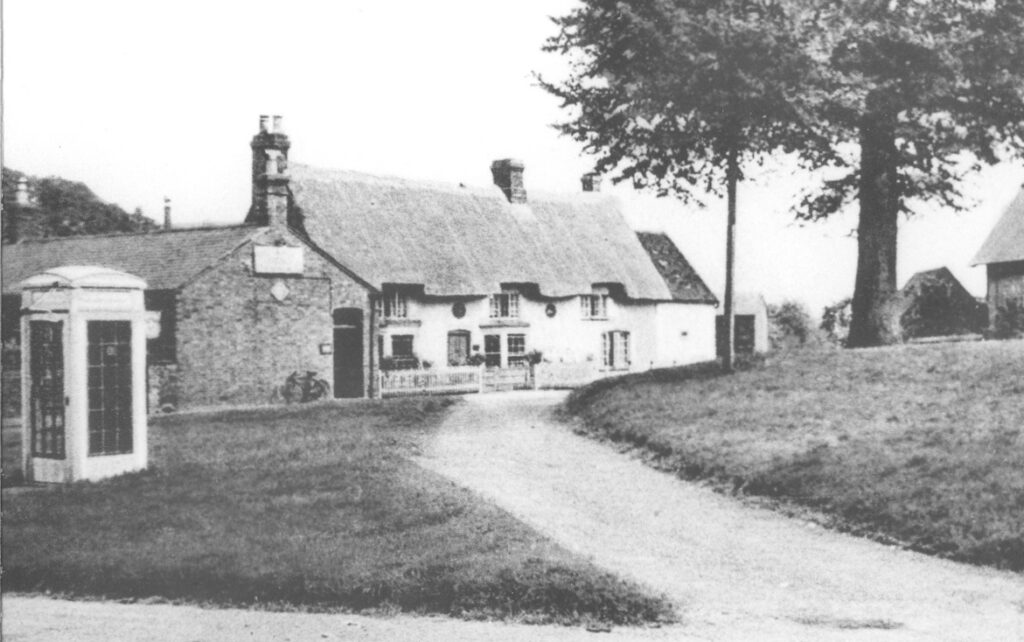
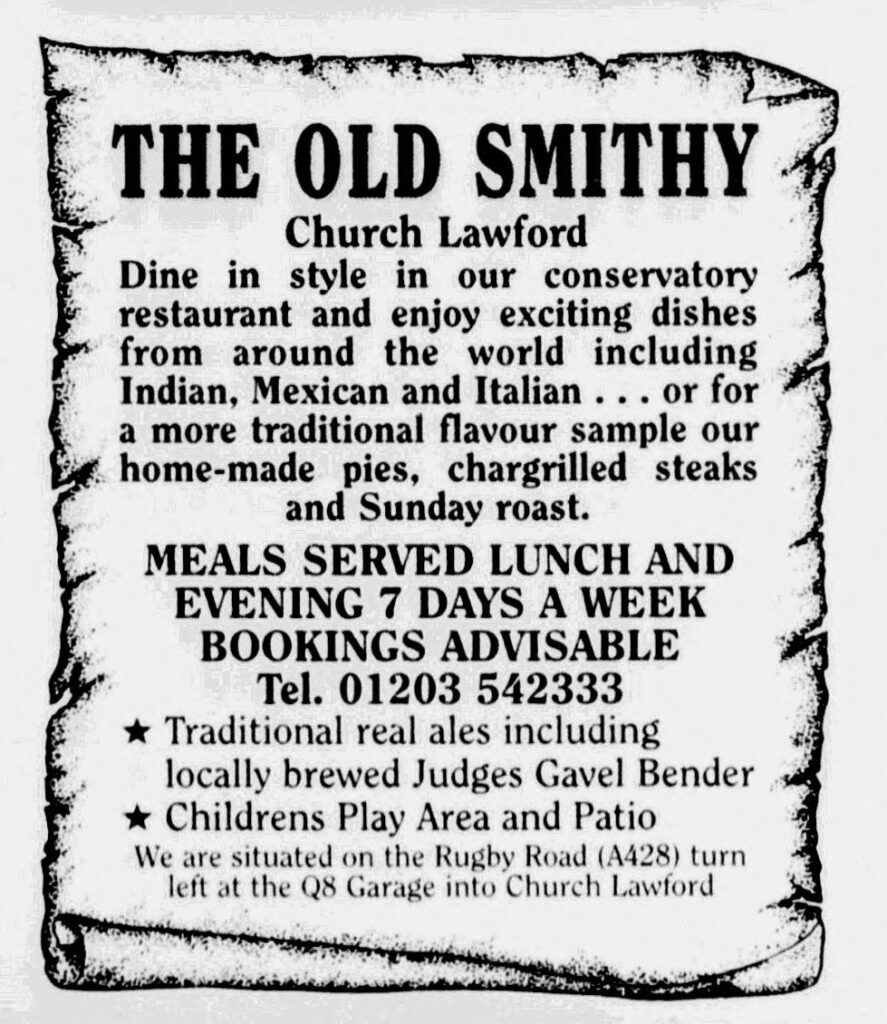
In 1992 the Pub was bought and became a free house, with the new owners renaming it the Old Smithy, apparently reflecting the fact the village used to have two of these – possibly referring to the ones in Smithy Lane, Church Road or adjacent to the Triangle.
Towards the end of the twentieth century the “Old Smithy” was associated with two on-site Microbreweries – Judges Brewery and Frankton Bagby, the latter continuing past the millennium.
